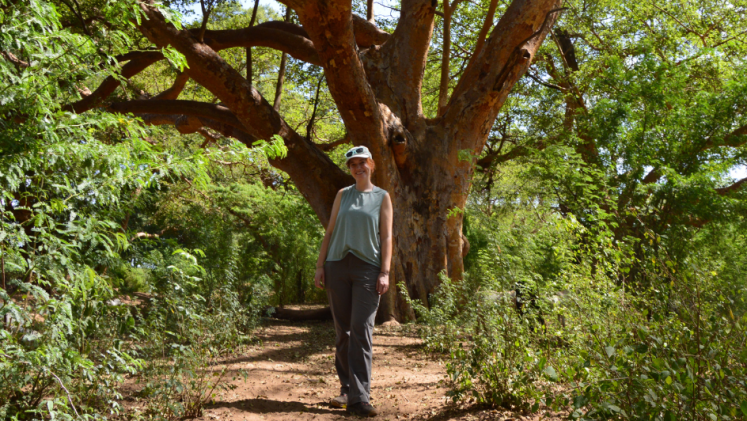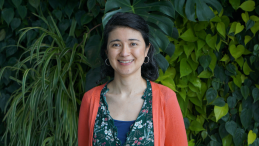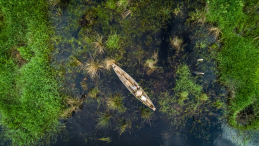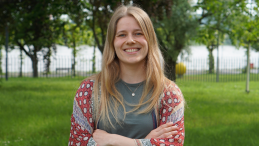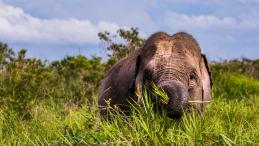Who: Anna Stamatogiannakis, Research Associate, Environmental Vulnerability & Ecosystem Services (EVES)
Where: Nairobi & Lake Baringo, Kenya
Why: Scoping mission to collect initial data and meet with UN focal points
Wetlands are vital ecosystems, providing essential benefits to both nature and people. Yet their capacity to provide such benefits depends on the wetland health - an aspect that is often overlooked. The WetlandHealth4UNGoals project seeks to change that by exploring how wetlands contribute to human well-being and how these contributions shift with changes in wetland health. Using Lake Baringo, Kenya, as a case study, researchers are gathering remotely sensed and qualitative data directly from the field to capture the links between these ecosystems and Nature's Contributions to People (NCPs). We sat down with UNU-EHS' Anna Stamatogiannakis, who participated in the project's first mission, to learn about their findings.
Why research Lake Baringo and what was the purpose of the mission?
Lake Baringo is a freshwater lake in Kenya’s Great Rift Valley and is a “wetland of international importance” under the Convention on Wetlands. It’s home to a rich biodiversity of species, including hippos, crocodiles, the African fish eagle and tilapia fish, all endemic to the lake. Local communities depend on the lake for their livelihoods, and it also plays a role in recreation, education and cultural rituals. With such human-nature connections comes a range of human-induced threats, including land use change, overfishing and pesticide use. The lake level has also been rising, displacing communities, destroying businesses and disrupting animal habitat. For these factors, Lake Baringo is ideal for researching NCPs, which are all the positive and negative contributions of nature to people’s quality of life, both individually and collectively.
The mission was an initial scoping trip to learn about the lake and interview residents. We also connected with UN focal points in Nairobi and other wetland research groups, building a network to help ensure our results inform ongoing monitoring and reporting efforts.
How did you carry out the field work?
We worked with a team of three local interviewers representing the three ethnic groups around Lake Baringo: Ilchamus, Tugen and Pokot. The team conducted interviews with 72 residents living around the lake, including farmers, fishers, pastoralists and small business owners. We designed questions to explore how people perceive NCPs in the Lake Baringo region, and how they may have changed over time.
For example, for material NCPs, we asked if they collected resources from the region, like energy sources, food resources, materials for building and medicinal plants. If they responded affirmatively, we sought more information about where these materials were collected and whether the interviewee thought there were enough of them. If they said no, we would ask why. We also asked questions to cover the non-material and regulating NCP categories. For example, “Have you learned anything from nature in the Lake Baringo region, such as skills or traditional knowledge?”, and “Do you notice a difference in how clean or unclean the air is when you are close to Lake Baringo or other wetlands in the region?”
What were some of your initial findings?
Initial findings highlighted the importance of the lake’s material values, such as water supply and food and feed. We also saw profound changes to the landscape due to the spread of the invasive species Prosopis juliflora, a fast-growing thorny shrub native to Central and South America. Introduced to dryland areas of Kenya in the 1970s and 80s to try and stop desertification, it resulted in some unintended consequences. We saw firsthand Prosopis’ vast reign, its thorns piercing our shoes to prove it. Interviewee perceptions were mixed on the plant. Some appreciated it for providing shade, absorbing dust and serving as a source of food for livestock. Others warned of its toxicity to animals, noted an associated decrease in indigenous tree species and lamented the loss of places for relaxation due to Prosopis’ pesky presence.
Where does your research go from here?
We will connect the data collected with existing research on NCPs in the area. Then we need to evaluate this information against the health of the wetlands, which will be assessed using satellite imagery and biological indicators like vegetative stress.
Connections made during the field mission support the “4UNGoals” aim of improving wetland monitoring and reporting to advance UN goals on combatting biodiversity loss, land degradation neutrality and climate change mitigation and adaptation. Monitoring is often fragmented, with institutions working in isolation. Greater collaboration and information-sharing can link these efforts. For example, Kenya’s goal of land degradation neutrality by 2030 depends on understanding degradation processes, which our work can help inform.
WetlandHealth4UNGoals is a joint project between UNU-EHS and the University of Bonn's Center for Remote Sensing of Land Surfaces (ZFL). Learn more here.

